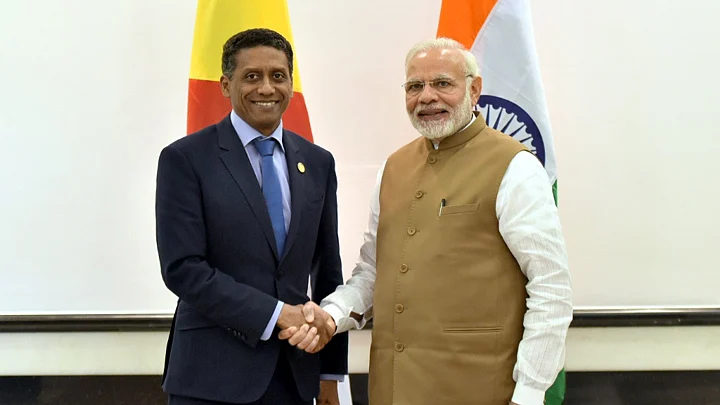Seychelles President Danny Faure is on a 6-day visit to India and is expected to restore normalcy to a rich tradition of cooperation between the two countries.
Faure's visit comes close on the heels of the island nation's decision not to develop a naval base at the Assumption Island with the help of India.
The two countries had signed a pact to jointly develop the naval base in 2015 under the previous president James Michel, but the parliament didn’t give the deal a go-ahead.
Seychelles, a cluster of 115 islands, situated 1,600 km off the coast of Kenya in the Indian Ocean Region (IOR), is more than just a tourist destination.
The country is a mosaic of ethnicities, bringing their own culture and adding to the diversity of the nation.
The Quint looks at the country's early history and its political transformation after it gained independence in 1976.
Early History
The archipelago was said to be uninhabited before, in the mid 18th century, a French explorer set foot on the islands, laying claims to it after the Seven Years' War in 1756.
The first settlers comprising 15 white colonists, 7 slaves, and 5 Indians arrived at the islands in 1770, but the habitats declared independence following the French revolution in 1790.
For the next two decades, the islands remained independent and facilitated the movement of French and British ships alike.
Even though the British took control of Seychelles in 1811, the islands were declared as official colony only in 1903.
The French culture, however, still permeated all sections of a small society that had taken shape over the last century.
Despite consisting of 115 islands, most of the archipelago’s population still lives in Mahe in the capital city of Victoria.
For Home Rule
After a devastating World War II, the call for self-rule on the islands gained momentum. Seychelles witnessed its first elections to a legislative council in 1948, but its freedom was still decades away.
In 1964, two political parties – France Albert Rene's socialist Seychelles People's United Party (SPUP) and James Mancham's pro-business Seychelles Democratic Party (SDP) – announced their arrival.
While the former, from the outset, endorsed independence from British, the latter was in favour of a strong relationship with the empire. However, by 1976, the year the independence dawned on the people of islands, both parties were on the same page as far as their relationship with the colonial power was concerned.
A coalition of SDP and SPUP took over the reigns of the islands, with the former's Mancham as the president, and the latter's Rene as the prime minister of the newly established nation.
A year later, the supporters of Rene organised a coup against President Mancham, installing Rene as the leader of the country.
Multi-Party System
Rene promulgated a new Constitution in 1978, declaring the country as a single-party State.
In 1991, Rene restored the multi-party system but continued to win subsequent elections until 2004 when he resigned and his deputy James Michel assumed the top post before stepping down in 2016.
In 2016, four decades after the archipelago gained independence from the British, an Opposition coalition, Linyon Demokratik Seselwa (LDS), defeated the ruling party in the parliamentary elections.
Seychelles President James Michel stepped down from his post and Danny Faure, amid people marching on the streets in his favour, was sworn in as the president of the country.
(At The Quint, we question everything. Play an active role in shaping our journalism by becoming a member today.)
